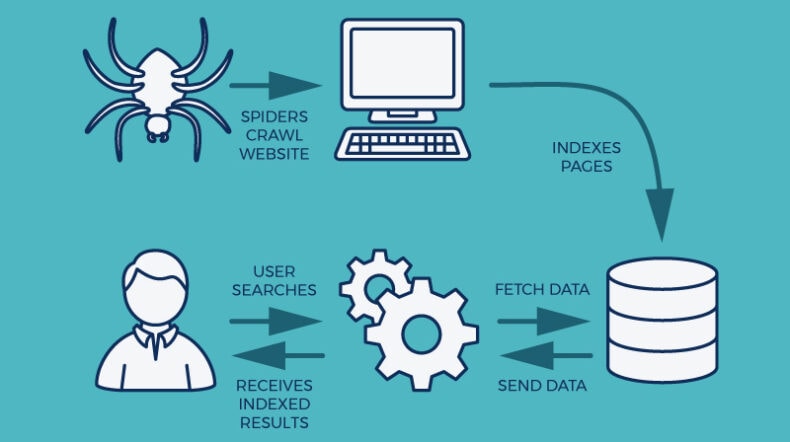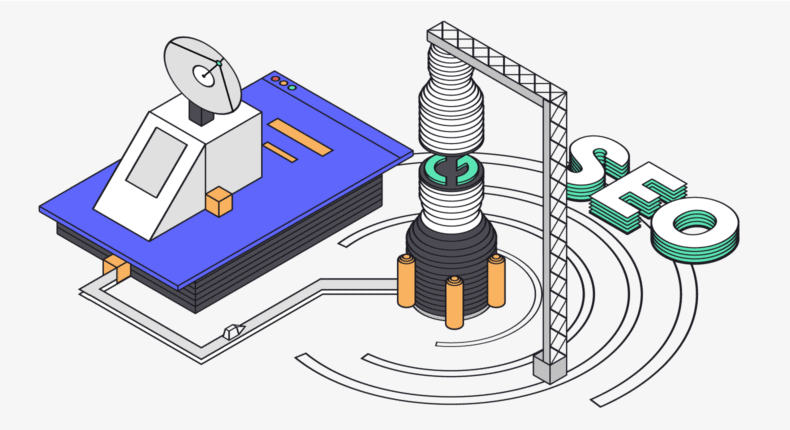Table of Contents
There are lots of blog posts out there featuring long lists of effective SEO tactics. If you blindly execute them, you’ll probably see a boost in search engine ranking.
But it’s like the “give a man a fish, teach a man to fish” saying. Using the tips is one thing, but it’s understanding them that will give you the foundation you need to be successful with SEO beyond a single tip or tactic.
You should optimize meta tags, but why?
You should control for duplicate content, but what does that mean?
Today we cover 7 foundations that will help you apply SEO to all your digital marketing activities.
Basic SEO principles for better rankings
Understanding the principles behind popular SEO tactics will allow you to manage your website more effectively. You won’t just be blindly executing tactics — you’ll know why you’re doing them, and be able to extend those principles beyond the single tactic you’re using. Here are some that every beginner should know.
1. Google makes the rules
The vast majority of search traffic goes through Google — over 85%. The closest competitor is Bing, which claims around 6%.

Since most people use Google, you’re going to be optimizing your website mainly for Google’s algorithm. That’s not to say you shouldn’t also have an SEO strategy for Bing and Yahoo, but there’s a good chance that most of your customers are using the internet’s most popular search engine.
That means you should be playing by Google’s rules. Read recommended best practices and learn what can get your site penalized. Google has an entire guide dedicated to SEO for beginners. Take advantage of it.
2. If they can’t crawl it, they can’t rank it
In SEO there are some activities that improve your search rankings, and then there are some you can’t rank without. A crawlable website is one of the second types.
In order for Google and other search engines to rank your website, they have to be able to process it (aka crawl it).

To make your pages easy to crawl, you should…
- Use a robots.txt file to direct Google which pages to crawl and which to ignore.
- Create a simple, keyword-rich URL structure.
- Submit a sitemap to Google. This gives crawlers a road map to your pages, which boosts crawling efficiency.
- Structure your site in a way that makes information easy to find. Start with broad category pages and then create subcategories for more specific topics and subtopics.
- Use schema markup to structure your data in a way that’s accessible to readers and crawlers. Schema can also help you appear on SERPs with rich snippets (bigger, more comprehensive search results).
- Use internal linking to connect all your pages. Google’s crawlers use internal links to hop from page to page on your website.
If your pages aren’t easy to find and structured well, it won’t just mean poor rankings — it could mean your pages get left out of Google search results altogether. Making sure your site is crawlable should be a high priority.
3. You can’t rank without high-quality content
When you look at search engine results pages (SERPs), you’re seeing the ranking of content in the order that the search engine believes is most to least relevant. The key word here is content. All of these listings represent web pages online that contain some kind of content that is useful to a user’s search.
For you to rank in a search engine, you have to create useful and high-quality content for searchers. What does this entail?
- Content: Blog post, video, article, infographic, etc. which is made for the purpose of entertaining, informing, or serving users.
- High-quality: High-quality content is original and it gives the searcher what they were looking for. It emphasizes both comprehensiveness and readability.
Content marketing is a strategy that brings together your important keywords, buyer personas, purchase funnel, and marketing channels, to use high-quality content to draw in organic traffic and turn that traffic to customers. If you want a chance at ranking highly on SERPs, you need a content marketing strategy.
4. The user experience comes first
SEO tactics aim to satisfy search engines, and search engines want to satisfy users. So don’t just focus on optimizing for Google. Your primary goal should be providing the best possible experience for the searcher. By doing this, you’ll likely satisfy many of Google’s ranking factors in the process. Some signs of a good user experience:
- Fast page load speeds. Users won’t wait for pages that take longer than a few moments to load. See how fast your pages are using Google’s Pagespeed insights.
- A responsive website. Users access the internet more from mobile devices than desktop. And Google has committed to using mobile-first indexing, so it will rank the mobile version of your website before desktop. That means your content needs to work well across smartphones, tablets, and mobile devices of all screen sizes.
- Simple site design. It doesn’t just benefit crawlers to have a straightforward site design. Users also benefit from broad category pages that link to pages with more specific information. This creates a trail that leads them to the information they want to know as quickly as possible.
Content that satisfies search intent. The search queries “ties” and “how to tie a tie” are going to drive you to two very different search engine results pages. The first search is likely transactional, meaning somebody searching “ties” probably wants to buy a tie. Top results for this search will be product pages. The second search is informational, meaning that the person searching this wants to learn how to tie a tie. Top results on this SERP will likely be instructional videos. Consider the best type, angle, and format for the content you’re creating to deliver exactly what the searcher wants.
Intent SEO is a new kind of SEO that takes all these factors into account by reframing SEO around the searcher experience. Learn more about it by claiming the free guide on our homepage.
5. Keywords are important but they’re not everything
In the early days of search engines, Google’s algorithm relied much more on keywords to rank content than it does now. People took advantage of it by keyword stuffing (using the keyword as many times on a page as possible) until Google began monitoring the density of words used on the page. If the keyword was mentioned too many times compared to the number of total words on the page, Google would know it was spam.
Now Google’s algorithm is much more advanced. While you should still use keywords to boost the chance you rank for a particular short- or long-tail phrase, you don’t need to rely on them as much as you used to. Today Google is better at understanding the overall context of your page. As in, it can tell if your page is good for searchers based on synonyms and related phrases, images, and even the response of users on your page. So don’t overthink it. Write naturally and don’t hesitate to turn to plugins for help.
Keyword tools like Clearscope can help you determine what terms the top-ranking pages have used to rank well. Yoast is another popular plugin for WordPress sites. You can also do your own keyword research on Google SERPs. The best way to find out which content you should create to rank at the top of Google is by going to the first page of Google and clicking on search results. Where do you see keywords? How is the content structured? These are helpful clues for content creation.
6. Backlinks talk
You’ve heard the phrase “money talks.” Well, in SEO, backlinks talk. These are links from other sites to your website, and they come as a result of high-quality content creation, link-building strategies, social media marketing, and sometimes even guest blogging (even though links from guest blogs are often devalued with the nofollow attribute, Google has said nofollow links may be used to determine search ranking).
Google’s Pagerank algorithm still considers backlinks to be a highly important ranking factor. In fact, among off-page ranking factors, backlinks are second to none. The best backlinks are:
- Natural: If Google can tell that you’re paying for links, or you’re involved in some kind of link scheme where you’re partnering with other sites to trade links, you’ll be penalized in search results. Aim to generate natural links that come from honest marketing initiatives, not “black hat” SEO tactics.
- Abundant: The more backlinks you have, the better.
- Quality: The best backlinks are from trustworthy and authoritative websites. A link from the Washington Post is going to be more valuable than one from lesser-known independent bloggers or a local online small business directory, for example.
- Relevant: If you’re a healthcare provider, getting a backlink from the Mayo Clinic or WebMD is going to be more valuable than getting one from the Granwehr SEO blog. That’s because our business, content, etc, isn’t as relevant to the healthcare field.
Google looks at backlinks like upvotes. If someone sends you a backlink, they’re vouching for you. They like and trust your content enough to send their users to it. The more times this happens, the more trustworthy and authoritative you appear to Google.
7. Little SEO tactics can add up to a big boost in rankings
Within the category of search engine optimization, there are lots of little SEO tips that can give you an edge. Looking at each tip in isolation, they don’t seem very important to your search engine rankings. Add them all together though, and they can make a big overall difference in the way you rank in organic search. Some tactics you should implement:
Write a compelling meta description and title tag
Lots of webmasters don’t bother to create keyword optimized meta tags. But this is the content Google pulls from your pages for SERPs. While they’re not official ranking factors, they can improve the click-through rate of your page, which can lead to higher rankings.
Optimize anchor text
Anchor text helps Google’s crawlers and your website visitors determine what a linked page is about. The anchor text in the previous sentence, “anchor text,” tells you that the page you’ll click through to will teach you more about anchor text. The best anchor text is short, simple, and descriptive.
Create descriptive image alt tags
An image alt tag is a description of an image on a web page. Though it’s primarily for software that can read the description aloud to someone with a vision impairment, Google also uses it to determine what an image is about. Writing descriptive alt tags that include your keyword can strengthen your page’s SEO, and also result in search impressions through Google image search.
Control for duplicate content
Google sees www.example.com and https://www.example.com as the same URL. This is a problem, because they will both lead the visitor to the same home page, but Google will only index one of them. So you have to use the canonical tag to let Google know which is the one you want showing up in search engine results pages. Otherwise, your page’s search authority may be split into multiple URLs, or it may not show up in search engines at all.
Boost your search rankings with these SEO principles
These basic SEO principles form the foundation for many of the tactics you’ll use in on-page, technical, and off-page SEO. Understanding how they fit into the bigger digital marketing picture will help you apply them even outside SEO.
Want to see how you’re doing with SEO? Get an instant SEO audit below, for free. Or, schedule a free consultation to see how intent SEO can boost traffic revenue by 700%.
